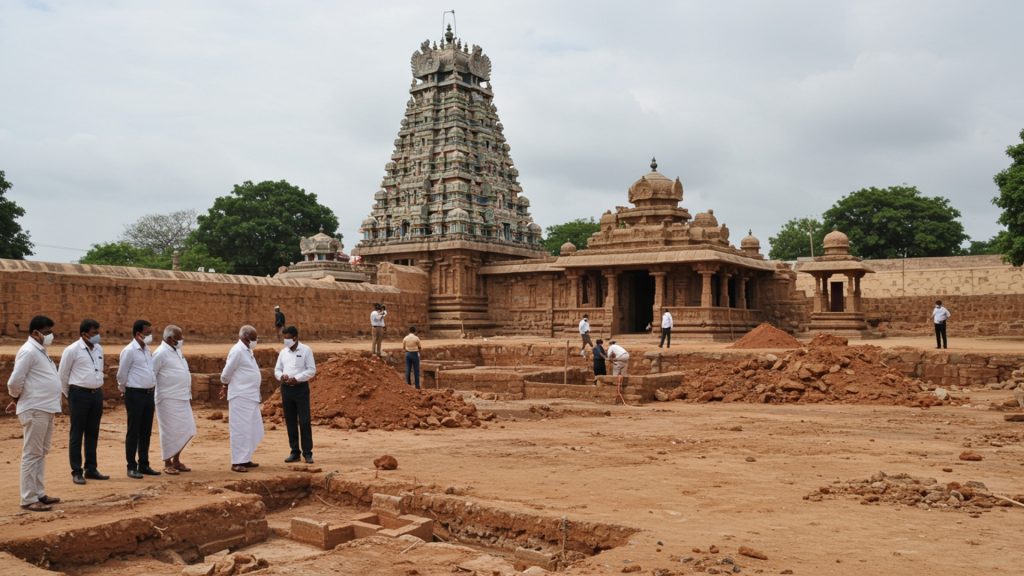A crucial investigation into the Dharmasthala burial site has suddenly stopped, caught in a fierce political battle. This halt leaves many crucial questions about the controversial ground unanswered, sparking widespread concern among residents. The probe, which began due to serious public worries about activities at the site, now faces an uncertain future as powerful political groups clash. This critical situation shows how quickly political tensions can block efforts to find the truth, leaving the community waiting for clarity amidst the growing storm.
Long-Running Allegations Come to Light
In the quiet temple town of Dharmasthala, a serious investigation has begun into claims of secret burials. These claims point to a history of alleged murders and sexual violence. The current probe started in July 2025 when a former sanitation worker stepped forward. He stated he was forced to bury many bodies, including those of women and children, between 1995 and 2014. These burials, he said, happened under threats to his life.
This is not the first time such serious concerns have been raised about the area. Protests by local families and various groups have occurred since the 1980s. These protests often relate to alleged sexual violence, murders. attempts to hide what happened. For example, protests took place in 1987 after the alleged rape and murder of a 17-year-old girl named Padmalata. Later, in 2012, the case of a 17-year-old girl named Soujanya, who was found dead, also led to widespread public outcry. Her family always said that the people who committed the crime were linked to the temple’s leaders. The Soujanya case was investigated by various police groups, including the Central Bureau of Investigation (CBI). the person charged was later found not guilty in 2023 because there was not enough evidence.
A senior lawyer and human rights activist, S. Balan, led a group of lawyers to meet Karnataka Chief Minister Siddaramaiah, after which the case was given to a Special Investigation Team (SIT) led by Director General of Police Pronab Mohanty.
The Investigation Begins
Following the new allegations in July 2025, a Special Investigation Team (SIT) was formed by the Karnataka state government to look into the matter. This team is led by a respected police officer, Pronab Mohanty. The main complainant, whose identity is kept secret by court order, claimed to have buried over one hundred bodies. He provided details about thirteen places where he said bodies were buried.
The SIT started digging at these identified spots. The process of digging up possible remains began in late July 2025. This was a long-standing request from the complainant, his lawyers. many activists who wanted answers. The investigation has used various methods, including ground-penetrating radar, to search for human remains deep underground. A helpline was also set up to help with the probe.
Limited Finds, Questions Arise
As the SIT’s work continued through August 2025, significant challenges became clear. After digging at many of the spots identified by the main complainant, very few human remains have been found. As of August 4, 2025, eleven of the thirteen identified sites had been dug up. No human remains were found at nine of these places. One site yielded a partial skeleton. another revealed a human skull and some bones. By mid-August, after digging at up to seventeen spots, there was still no major discovery of skeletal remains. Sources suggest that only two out of sixteen spots pointed out by the informant yielded any skeletal remains.
This lack of widespread findings has led to questions about the complainant’s claims. Police have stated they have “confidential details” that the main whistleblower might try to escape once the digging starts. Due to the absence of many skeletal remains, the SIT is reportedly thinking about conducting a narco-analysis test on the complainant to check his story. This comes even as his lawyers accuse the police of delaying the on-site inspections.
The District Police Superintendent, Arun K, stated in an official announcement, “There is secret data that the complainant could run away. Because of this, there are reports that suggest a rush to dig up the bodies without following the right steps.”
Adding to the complexity, another complainant, Sujatha Bhat, who claimed her daughter went missing in 2003 and made serious accusations against temple staff, has now gone missing herself. Police say there is no solid proof to support her statements. questions remain about her identity and reasons for coming forward. This has created another hurdle for the investigators.
Concerns Over Records and Witnesses
A major setback for the investigation is the admission by the local police in Belthangady that they destroyed records of unidentified death cases from 2000 to 2015. This period is vital because it overlaps with the time the whistleblower claimed to have buried hundreds of bodies. Experts have questioned this action, saying such documents are vital for investigations of this type. If these records have been destroyed while the SIT is still investigating, it suggests that powerful, unseen forces might be at work.
Moreover, there are concerns about how the Special Investigation Team is structured. It has been found that the SIT cannot officially register new cases. It can only investigate cases that have already been filed by local police. This gap in their powers has caused delays and raised questions about how ready the investigation was. The credibility of the main complainant is also being closely looked at, especially since he claimed to have buried more than a hundred bodies. his accounts have varied.
Political Fallout and Blame Game
The ongoing investigation has quickly turned into a major political debate in Karnataka. The main opposition party, the Bharatiya Janata Party (BJP), has accused the ruling Congress government of trying to damage the image of Dharmasthala, a highly respected Hindu pilgrimage center.
A BJP leader, R. Ashoka, called the investigation an “anti-Hindu conspiracy” to defame the temple. He also claimed that the whistleblower was Muslim, which was incorrect, as the whistleblower is from the Dalit community. Union Minister Pralhad Joshi also accused the Karnataka government of staging a “drama” over the Dharmasthala issue and asked for an immediate report to be presented in the Assembly.
The BJP and groups connected to them view the investigation as an attack on Hinduism and are considering making it a key issue in future elections. Many BJP members have planned visits to Dharmasthala to show their support for the temple. The party argues that the government is trying to smear the temple’s name.
In response, the Congress party has moved into damage control mode. Deputy Chief Minister D. K. Shivakumar has said there is a planned conspiracy to harm Dharmasthala’s reputation. He also stated that the government stands with the temple’s administrators. The Congress leadership maintains that they do not wish to turn this into a political issue and are focused on finding the truth. They believe that whoever is guilty should be punished. But, some analysts say that the Congress is worried about how the BJP is making this a religious issue, changing the discussion from whether crimes happened to whether Hindu temples are being unfairly targeted.

